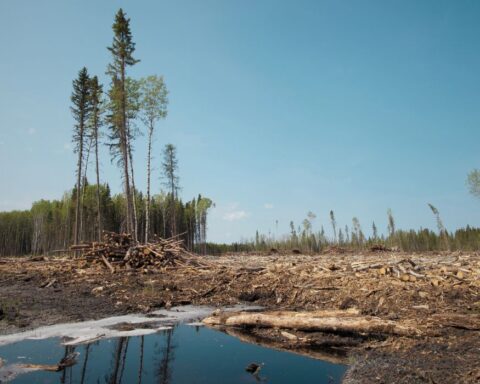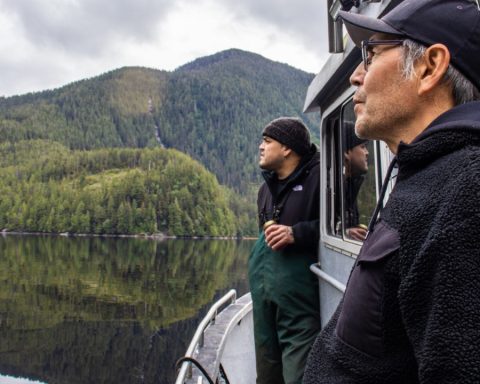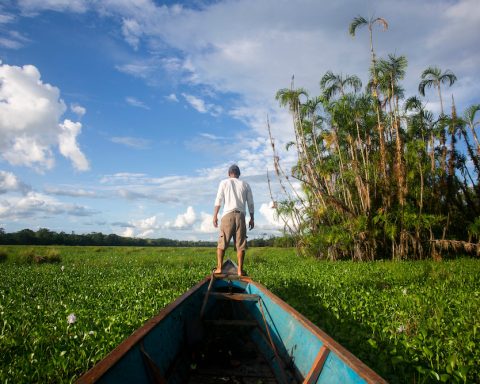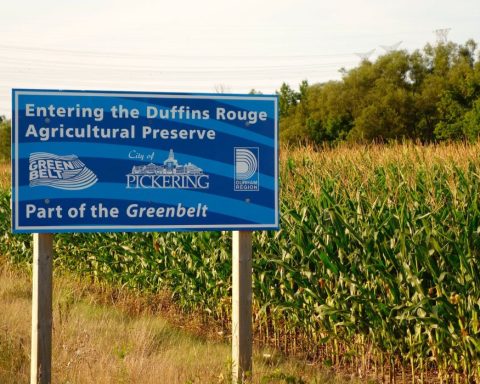Almost 30 years ago, I was arrested at the logging blockades in the rainforests on Vancouver Island, in Clayoquot Sound. That began a multi-decade journey that led me from the blockades and boycotts to negotiations with some of the largest logging companies and customers of wood and paper products in the world. Along the way we formed unprecedented new alliances and agreements that protected most of the intact rainforests in Clayoquot Sound and eventually millions of hectares of the Great Bear Rainforest. We also catalyzed important conversations in the marketplace on procurement policies, conversations that led to a growing demand for certified sustainable paper and wood products.
Decades later, I never expected to be back on the blockades or fielding calls again from concerned customers of British Columbia forest products. When I was arrested by the RCMP with other forest defenders at a blockade in Fairy Creek last month, I had just visited one of the most beautiful old-growth forests I have ever seen. These old-growth forests on Pacheedaht and Ditidaht territories, on the west coast of Vancouver Island in British Columbia, are among the last of their kind anywhere in the world. I was astonished to see yellow cedars more than a thousand years old. The ancient giant trees that are iconic around the globe are not only the pillars of these rare temperate rainforest ecosystems – they are part of the most carbon-rich forests on earth. Standing among these giants, there is no question that they are worth more than any dollar amount their felled lumber can deliver. It’s clear why Indigenous leaders, scientists and their allies are risking their safety and freedom to defend them.
Civil disobedience is a last resort, especially in the middle of a pandemic. When it comes to old-growth forests in British Columbia, it is no secret how desperate we are. More than 97% of the original large, old forests that stood in this province prior to colonization and the advent of industrial logging have been destroyed. But even more shockingly, the majority of what remains is still unprotected and open to logging. In the case of forests on Ditidaht and Pacheedaht territory, those old-growth forests are still standing thanks to the tireless efforts of forest defenders, but they remain at imminent risk.
On June 9, B.C. Premier John Horgan publicly accepted a call from Pacheedaht, Ditidaht and Huu-ay-aht First Nations to defer old-growth logging in parts of their territories, including areas in Fairy Creek and the Walbran. Hogan called the two-year deferral “monumental.” While it’s an important development, it has not stopped the chainsaws. The new deferral leaves critical old-growth forests in the area – and in fact, all across B.C. – open to logging. Elder Bill Jones has asked forest defenders to stand their ground and continue protecting these ancient trees. As arrests continue, it is clear that without broad bans on old-growth logging, the situation will only escalate. Elsewhere, many First Nations, including most recently the Squamish Nation, have publicly demanded old-growth logging deferrals or declared moratoria on old-growth logging in their territories.
At Fairy Creek, the logging company in question is not a stranger to the controversy of logging old-growth forests in B.C. Teal Jones, headquartered in Surrey, ships wood products to a variety of locations and sectors, including lumber for building and shingles for siding. As tensions mount around the remaining old-growth forest and the lack of government action, customers of Teal Jones and other old-growth logging companies (including Canfor, West Fraser, Western Forest Products and Interfor) should expect a sharp increase in scrutiny on their sourcing. Many home- and office-supply and building companies, including Home Depot and Staples, have policies against sourcing from endangered forests after long campaigns from Stand.earth (then known as ForestEthics) and our partners. Now is the time for builders, home supply stores, and pulp and paper customers to be proactive and commit to ending any purchasing sourced from at-risk old-growth forests. If they don’t hold themselves accountable, our movement certainly will.
In my experience, what customers of wood and paper products want is certainty. Certainty that the forest products they buy are harvested sustainably and don’t come from endangered-species habitat, endangered ecosystems or increasingly rare old-growth forests and certainty that they will not become embroiled in controversy such as what is unfolding in British Columbia.

Photographer TJ Watt captured images of old-growth trees before and after logging in Vancouver Island’s Caycuse Valley in the spring and fall of 2020. Caycuse Valley is not protected by deferrals being applied to other areas of Fairy Creek.

Provincial and federal governments in Canada have a vital role to play in delivering that certainty. B.C.’s NDP government was elected on a promise to implement the recommendations of an expert panel on old growth, which included immediate logging bans in at-risk old-growth forests like the ones at Fairy Creek. But Premier Horgan and his government have instead faltered on their promise, with recent deferral announcements leaving the vast majority of old-growth forests on the chopping block.
Both B.C.’s and Canada’s commitments to large-scale nature protection and bold climate action are seriously undercut when some of the most carbon-rich forests on the planet are being clearcut. The provincial and federal governments need to collaborate to ensure protection of our remaining old growth and threatened species habitats. They have the funds and the tools to support Indigenous stewardship initiatives and land-use visions, as well as a just transition for workers and communities away from old-growth logging. All they need is the political will, and growing marketplace concern and the escalating actions at Fairy Creek and across B.C. will give it to them one way or another. To date, 222 people have been arrested while standing up for these ancient, giant trees.
Almost 30 years ago when I was on my first blockade at Clayoquot Sound, I knew that the solutions to these issues would be difficult. But I never thought that all these years later, we would still be fighting to defend irreplaceable old-growth forests – only now, even fewer stands of these ancient trees remain. This must be the last time. We owe it to our grandchildren and their grandchildren to leave a liveable world, one where they can walk through an old-growth rainforest and crane their necks up at the treetops in awe.
Tzeporah Berman is the international program director at Stand.Earth, chair of the Fossil Fuel Non-Proliferation Treaty Committee, and an Adjunct Professor of Environmental Studies, York University.







